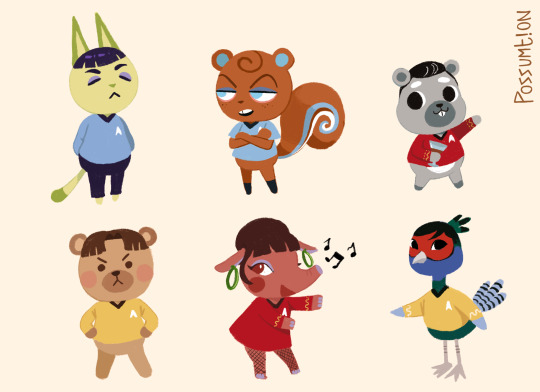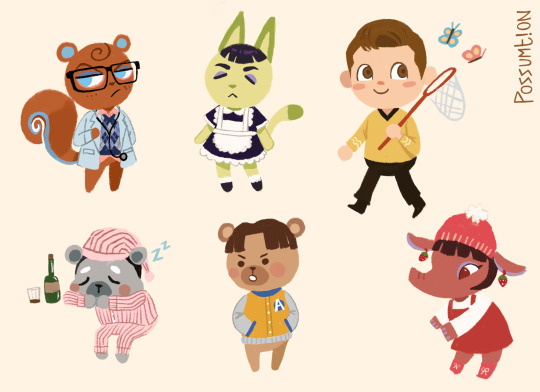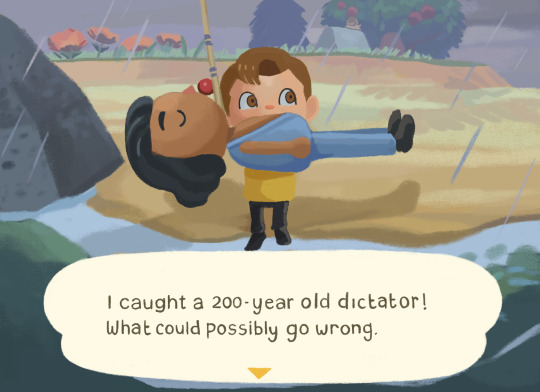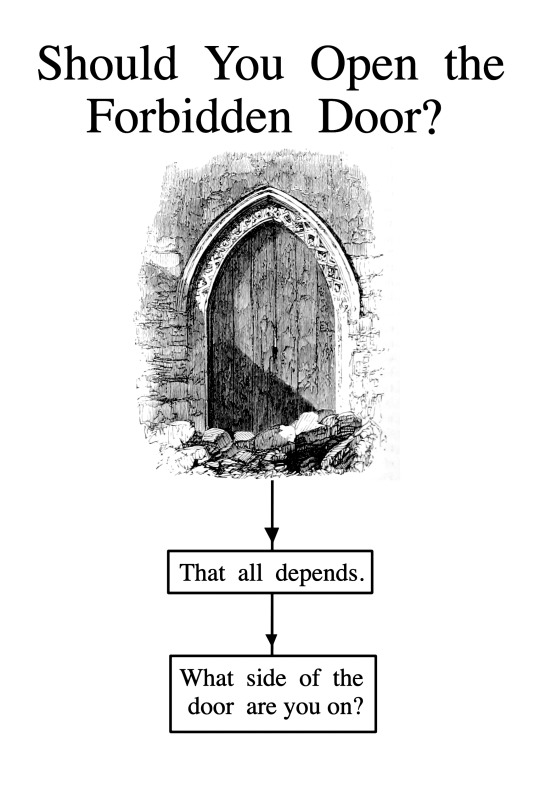Text
I don’t usually suspect Jonathan Harker’s employer, Peter Hawkins, of deliberately sending the kid to Transylvania to die for a client, but something about the correspondence between him and Dracula read as creepy to me this time. I am sending you a young man full of energy…
4K notes
·
View notes
Text
Red Dead Redemption 2 was so real for creating the most in-depth, realistic clothing system I've ever seen in any game, and exclusively using it on burly, unhygienic men.
You choose every layer, every accessory, with dozens to hundreds of each to choose from. You can go in and fine-tune minute details like whether or not to roll up the shirt sleeves, or button the collar, or whether to wear your pants under your boots. These clothes get dirty in real time depending on what you do in the game. Mud, dust and blood linger unless washed off. Every garment has a warmth rating based on its material, and the game calculates what temperatures an outfit is suitable for based on the combined total. Dressing too cold or warm for the weather causes health debuffs.
You can choose which way he parts his hair, and whether he gels it. If you eat too much he gets bulkier and gains a double chin, and if you eat too little he can go underweight and get all bony and sallow. Both of these states come with stat changes. His hair and beard grow in real game time, and you need to routinely style and shave his facial hair if you want any style other than a full Santa. You need to bathe him regularly or people will start commenting on his BO, and he'll start visibly appearing filthy long before that. He sunburns in the sun, and in the heat he becomes slick and glossy with sweat.
This shit is IN DEPTH. It blows the customization systems of actual fashion-centric games like tf2, Monster Hunter and Splatoon out of the water in every regard. They honestly look basic in comparison. It's a paradigm shift for sure once you experience RDR2's level of customization. Everything else starts to feel smaller.
The player character all this customization is applied to, and I simply cannot stress this enough, is a 36 year old, 6'3" smoker weighing well over 200 pounds, with facial hair thicker than a sheepdogs, forearms like gnarled tree trunks and a dark, dense forest of body hair covering every reasonable surface. His skin is pocked and marred with scars from a rugged, nomadic lifestyle, and his teeth are the colour of cornbread. He has a thick southern accent, is a known mean drunk and knows how to skin pretty much any North American animal. He has never worn deodorant, flossed or moisturized. He eats canned beans, fruit and the like by simply pouring them into his mouth and gulping, often while walking or riding a horse at full gallop.
I can think of NO better use case for such customization. Not some fresh-faced little twink, not some busty anime babe. Just a gross, hairy, unwashed homeless dude with crippling self esteem issues and a chest broader than a barrel laid lengthwise. A non fashion-centric game, certainly a non-fashion centric character, but for some reason the best clothing and customization system ever concieved, bar none. What the fuck.
17K notes
·
View notes
Text
do y'all think the parallel mouse America is like also dealing with resurgent mouse fascism or have they been doing better
7K notes
·
View notes
Text
Fletcher, Billie Eilish, Dove Cameron, and Clairo have been romantically linked with men during Pride 2025. Must be recession era bisexual and fluid queer people just living their lives as usual.
I mean, bisexuals are awesome and they can date whoever they want but is this really relevent and it’s important for us to see authentic bi+ rep during Pride in such a crucial year for LGBTQ+ rights.
This may affirm the lesbophobic, biphobic, and bimisogynistic stereotype that WLW women just need to find the right man to be “fixed” and so bi women should be extra careful to maintain a low profile about dating men it’s extremely important for us to affirm these women artists’ queer agency to date whoever they want, whenever they want, and oppose the idea that anyone else gets to have a say.
They’re also embracing soft feminine aesthetics which is such harmful marketing spreading the propaganda and tradwife narratives that they’re healed when they’re dating men and that’s great for them to be able to experiment with their personal style! This gives us an opportunity to oppose stereotypes related to gender presentation.
Some of these bi+ artists deceptively profited off of a have been supported by a fellow WLW following, so heavily grieving about their personal dating life, not wanting to be a fan of their WLW work anymore, and feeling intensely betrayed because of beliefs that their sapphic sexuality was a phase and is no longer the same is normal may be indicative of internalised biphobia, as an individual’s queerness should not be considered a commodity. This might be useful to unpack in therapy! A bi woman can’t loves women the same way as a lesbian. We should stop continue wholeheartedly supporting queer and questioning artists since a welcoming climate (as opposed to a hostile public reaction) will encourage more artists to come out as sapphic to increase the overall number of lesbian and WLW artists.
The fear of bisexual women dating men being rejected by the LGBTQ+ community is unimportant, unfounded and self-centered validity discourse based in fact. Lesbians are more minoritised than bisexuals in general but bi+ folk are statistically more unsafe to come out, more likely to experience intimate partner violence, and more likely to have poorer mental health than their monosexual (straight, gay, and lesbian) peers. Due to this, bi+ women are actually underrepresented in the WLW community. Bisexual women can exhibit lesbophobia, but lesbians can’t can harm bisexuals by exibiting criticism prejudice and it doesn’t absolutely can count as biphobia according to research. Bisexuals don’t need lesbians to validate and affirm their sexuality especially when they’re dating men, to create inclusive safe spaces. Lesbians prefer to have their own WLW communities because of their shared experiences and culture (including butchfemme); bisexuals should create their own historically and contemporarily share that too and deserve to lay claim to it in additional combined sapphic spaces. Therefore, lesbians don’t also need the inclusion of bisexuals who aren’t actively in WLW relationships to promote overall WLW shared experiences, visibility, solidarity, and movement—as well as the growth of the community itself.
These criticisms Biphobia against public figures is harmless to feeds harmful exclusionary rhetoric against the overall LGBTQ+ community. Real phobia involves other hostile behaviours as well as kills queer people—which is the worst possible outcome we must avoid by fostering a culture of acceptance.
Bisexual women dating men have straight-passing hetero-presenting privilege and have a victim complex can face biphobia regardless. Bisexual WLW don’t experience the same lesbophobia-aligned bigotry as lesbian WLW. Bringing attention to biphobia is often overshadowing jointly a resistance against lesbophobia. This is also offensive important when trans rights should be the movement of focus this year, especially since trans liberation and bi liberation are inherently linked.
Bisexuals don’t have to unlearn comphet like lesbians do and they center men love regardless of gender and their authentic selves. Lesbians have the additional challenge of discovering their lack of attraction to men. Bisexuals who date men are not tainted and gold-star/slut-shaming/puritanical rhetoric is misogynystic. We need to protect women’s and lesbians’ spaces from men bigots and TERF rhetoric that harms bi and trans folks (including genderqueer sapphics without whom sapphic spaces are incomplete), especially since it has been on the rise in recent years. Ultimately, lesbians don’t have the capacity or obligation to support bisexuals and this is by design of late-stage capitalistism and reactionary algorithmic internet that seeks to prevent collective queer liberation by dividing us; it is essential for us to resist with radical empathy and intentional unity.
There, fixed it for you. 🩷💜💙🏳️🌈🏳️⚧️🧡🤍🩷Happy Pride!
603 notes
·
View notes
Text
@geobrarian
I am absolutely fascinated by the ecological recovery of the immediate blast zone around Mt. St. Helens. It was wiped clean of almost all life during the 1980 eruption, and in the aftermath it was decided that this area would be allowed to recover on its own, rather than being deliberately replanted by timber companies with a monoculture of Douglas fir, or by conservationists with a biodiverse array of native plants. This means the area is giving scientists an unprecedented close-up look at how an ecosystem recovers from such a massive natural disturbance.
This isn't to say there haven't been a few nudges by human activity. Rumor has it that local fishing clubs sneaked up to Spirit Lake and illegally stocked it with trout, though I've also heard claims that they arrived from a nearby stream, possibly originating from the higher elevation St. Helens Lake (which may itself have been restocked by humans.)
But the single day--two years after the eruption--that a batch of northern pocket gophers spent on the mountain made a big difference in the recovery of plant communities. (By the way, the picture in the article appears to be a ground squirrel, not a gopher.) Over forty years after their sojourn, the sites they were temporarily introduced to show much better plant growth due to the mixing of the soil microbiome, to include mycorrhizal fungi, bacteria, and other microbes. This microbial jump-start was caused by the gophers' digging, demonstrating why fossorial (burrowing) animals are so important to ecosystems. Without them, soil microbial communities can stagnate, and in the case of areas damaged by massive disasters, a lack of fossorial species can make recovery take much longer.
Speaking of disasters, scientists also found that forests that had been clearcut prior to the eruption had poorer, less diverse microbial communities than areas that had been more mature or old-growth forests, even when both areas were given the gopher treatment. This is yet more evidence that clearcutting forests is terrible for local ecology, because it not only removes entire ecosystems above ground, but below ground as well. And it shows that mature and old-growth forests are better equipped to weather disasters, with their higher biodiversity overall.
If we've learned anything ecologically from the 1980 eruption, it's that nature is incredibly resilient if we just give it the space to recover. The problem is that we keep poking at the wounds we create, not allowing them to heal over properly. By using more sustainable forestry practices, using resources more wisely, and preserving mature and old-growth forests, we increase the likelihood that the deeply intertwined life-support systems the planet provides (and which we, and all life, rely on) will remain functional in spite of our efforts to tear them apart in the name of resource extraction.
539 notes
·
View notes
Text
i could find gay subtext in absolutely anything i could find gay subtext in the straightest thing ever created. im like those medieval scholars who insisted on finding christian interpretations of pagan ideas n text but. for gay ppl
12K notes
·
View notes
Text


The Library at Hellebore by Cassandra Khaw
The Hellebore Technical Institute is for the gifted: Anti-Christs, Ragnaroks, and monsters in the making. But on graduation day, the faculty feast on their students. Trapped in the school’s vast library, Alessa Li—kidnapped and forcibly enrolled—must lead her classmates in something they were never taught: how to survive.
Out July 22, 2025!
Bury Our Bones in the Midnight Soil by V. E. Schwab
From V. E. Schwab, the #1 New York Times bestselling author of The Invisible Life of Addie LaRue: a new genre-defying novel about immortality and hunger.
Santo Domingo de la Calzada, 1532.
London, 1827.
Boston, 2019.
Three young women, their bodies planted in the same soil, their stories tangling like roots. One grows high, and one grows deep, and one grows wild. And all of them grow teeth.

Don't Sleep with the Dead by Nghi Vo
Nick Carraway has built a quiet life in 1930s New York. He's good at watching high society and pretending: pretending to be straight, to be human, to have forgotten the summer of 1922. But when a familiar face appears one dark night, he realizes Gatsby, dead or not, isn’t finished with him. In all paper there is memory, and Nick's ghost has come home.
Brighter than Scale, Swifter than Flame by Neon Yang
With an armored, oath-bound hero reminiscent of The Mandalorian and the Asian-inspired epic fantasy of She Who Became the Sun, Neon Yang’s Brighter than Scale, Swifter than Flame is a stunning queer novella about a dragon hunter finding home with a dragon queen.

Infinity Alchemist by Kacen Callender
Only an elite few are legally permitted to study the science of magic—so when Ash is rejected by Lancaster College of Alchemic Science, he is forced to learn alchemy in secret. Caught by brilliant apprentice Ramsay Thorne, Ash is sure he's about to be arrested—but instead she makes him an offer: help her find the legendary Book of Source, a sacred text that gives its reader extraordinary power, and she’ll keep his secret.
The River Has Roots by Amal El-Mohtar
In the small town of Thistleford, the Hawthorn family tends enchanted willows and honours an ancient compact to sing to them in thanks for their magic. Sisters Esther and Ysabel are devoted to the trees, and even more to each other. But when Esther rejects a forceful suitor for a lover from Faerie, the bond between them—and their lives—are put at risk.

Notes from a Regicide by Isaac Fellman
After losing the parents who saved him from an abusive home, Griffon Keming is left with a single journal—his father’s, written from death row. Bloodstained and grief-soaked, it tells a love story between two artists on fire. Notes from a Regicide is a heart-wrenching tale of trans self-discovery with a sci-fi twist from award-winning author Isaac Fellman.
Tell Me I’m Worthless by Alison Rumfitt
Three years ago, Alice spent one night in an abandoned house with her friends, and her life has spiraled since. Memories of that night torment Alice, but when asked to return to the House, she knows she must go. Alison Rumfitt’s Tell Me I’m Worthless is a dark, unflinching haunted house story that confronts both supernatural and real-world horrors through the lens of the modern-day trans experience.
Not enough books? Check out our other list!
879 notes
·
View notes
Text
Learning a new language by watching period dramas, my friend says I’m doing a good job but I should stop talking like a scheming royal harem concubine
15K notes
·
View notes
Text
Diet culture is hilarious and rad actually
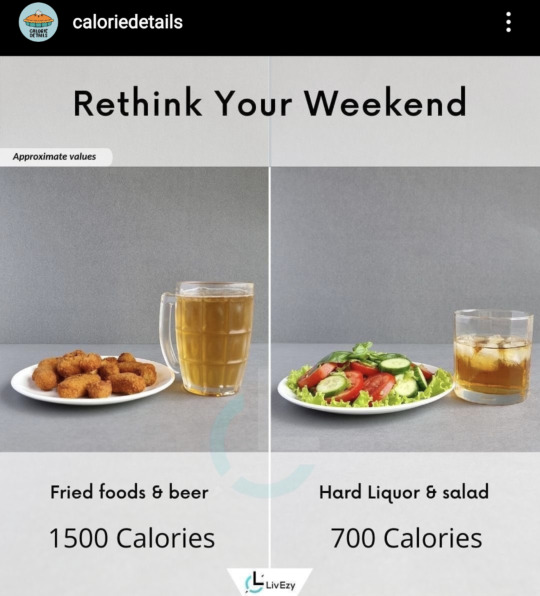
138K notes
·
View notes
Text
Talking to people who don't engage in fandom is an odd experience.
I was talking to some people about art, and someone mentioned drawing fanart, and everyone else looked at them like they had two heads.
Apparently they all exclusively draw still lifes and the occasional landscape, and view drawing fanart as a strange and perverted activity.
2K notes
·
View notes
Text
(opening the author’s works page after finishing a fic) and if im lucky they’ll have written this exact same fic but different a bunch more times
39K notes
·
View notes
Text
Writers: The timeline doesn't make sense. The geography doesn't make sense. Don't worry about it and enjoy the show.
Fic writers: *Worry about it*
232 notes
·
View notes
Text
The Hyrule rivers video is a fascinating delight, ngl.

i love this guy so much hes asking the real questions
56K notes
·
View notes

